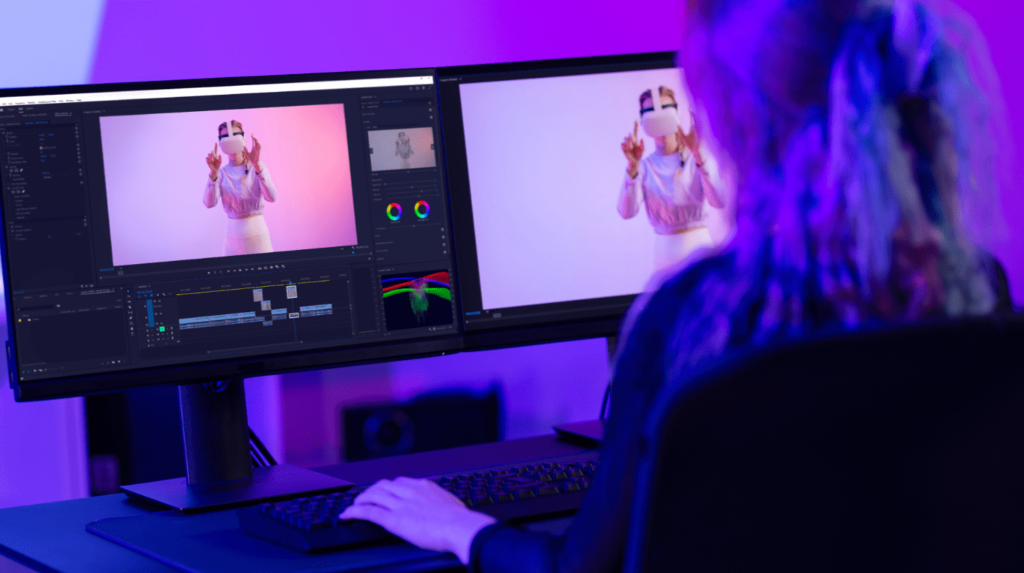In today’s digital-first world, capturing attention is no easy feat. With endless scrolling, shortened attention spans, and a constant flood of visual content, static images are no longer enough. That’s where motion graphics come into play, blending design, animation, and storytelling to create dynamic visuals that captivate and inform. Whether it’s a quick explainer video, an eye-catching ad, or an engaging Instagram story, motion graphics are shaping how we communicate visually in the 21st century.
And while tools like video editors and animation software are becoming more accessible, even simpler design resources like free printable poster templates are getting a motion upgrade. Designers now animate posters for digital use, creating hybrid formats that can live online or in print, proving how versatile visual communication has become.
So, why are motion graphics rising so fast? Let’s break down the reasons behind the boom and how you can use them to stand out in a noisy online world.
What Are Motion Graphics?
Motion graphics are animated graphic design elements, think text, shapes, illustrations, or data brought to life through movement. They aren’t full-blown character animations or cinematic videos; rather, they add motion to design in a way that enhances communication.
For example, instead of a static pie chart, a motion graphic might animate each slice as it grows, accompanied by text popping in with key stats. This kind of animation turns data into a visual story, making it more digestible and memorable.
Why Motion Graphics Are Dominating Visual Communication
1. They’re Attention-Grabbing (and Scroll-Stopping)
According to a 2023 report by Wyzowl, 96% of marketers say video has helped increase user understanding of their product or service. Motion graphics combine the brevity of static images with the dynamic engagement of video, making them highly effective for social media and ads.
In a world where users scroll past content in milliseconds, movement is the ultimate hook. A subtle animation or a pulsing icon can be the difference between someone stopping or skipping.
2. They Simplify Complex Information
Explaining a complex process or idea? Motion graphics break it down step by step literally. By guiding the viewer’s eye with purposeful motion, you can tell a story that builds understanding.
This is why explainer videos, product demos, and onboarding tutorials often rely on motion graphics. They make even the most technical subjects feel intuitive and accessible.
3. They’re Cost-Effective Compared to Live Video
Producing live-action video can be expensive and time-consuming actors, sets, lighting, editing, and more. Motion graphics, on the other hand, can be created using software, often with just a designer or animator.
Plus, with platforms like Adobe After Effects, Canva, and Blender offering templates and plugins, small businesses and creators can produce high-quality motion content without Hollywood budgets.
Real-World Applications of Motion Graphics
✦ Marketing and Advertising
From animated banners to social media reels, marketers use motion graphics to convey brand messages quickly. Short animated clips on Instagram or TikTok often outperform static posts in engagement.
✦ Education and E-Learning
Educators and online courses use motion graphics to simplify ideas. Animations help students visualize abstract concepts, from molecular biology to economic systems.
✦ Corporate Communication
Internal training videos, reports, and presentations are more engaging with motion graphics. They help employees retain information and reduce training fatigue.
✦ UI/UX and Web Design
Microinteractions like animated buttons or loading icons make websites feel responsive and alive. These subtle graphics enhance user experience and create a sense of polish.
How to Get Started with Motion Graphics
You don’t need a full design team to incorporate motion graphics into your content strategy. Here’s how to ease in:
Use Tools You Already Know
Canva, Adobe Express, and Visme offer motion features now, making it easy for non-designers to animate text, images, and charts.
Start with Templates
Platforms like Envato Elements, MotionArray, and Adobe Stock offer motion graphic templates you can tweak. These are great for learning animation structure.
Focus on Purpose, Not Just Movement
Don’t animate for the sake of it. Every motion should enhance the message, whether it’s drawing attention to a CTA or guiding a user through a story.
The Future of Motion Graphics: Where It’s Headed
Motion graphics are evolving alongside technology. Here’s what we can expect in the near future:
- Interactive motion graphics: Think animations you can click, swipe, or drag great for learning modules or product showcases.
- AI-generated animation: AI tools are making it easier to auto-generate movement from text prompts or static images.
- Augmented Reality (AR) motion graphics: With tools like Spark AR or Snapchat Lens Studio, motion graphics can now interact with the real world.
As 5G and faster internet speeds become the norm, video-based content (especially lightweight formats like motion graphics) will dominate web and mobile experiences.
Final Thoughts
In the age of visual noise, motion graphics offer clarity, impact, and storytelling power all in a matter of seconds. They bridge the gap between static design and full video production, providing a flexible, creative way to communicate. Whether you’re a startup looking to stand out or an educator trying to simplify a tough concept, motion graphics are no longer optional they’re essential.
So next time you’re designing a post, pitch, or presentation, ask yourself: Would a little motion help your message move further?
